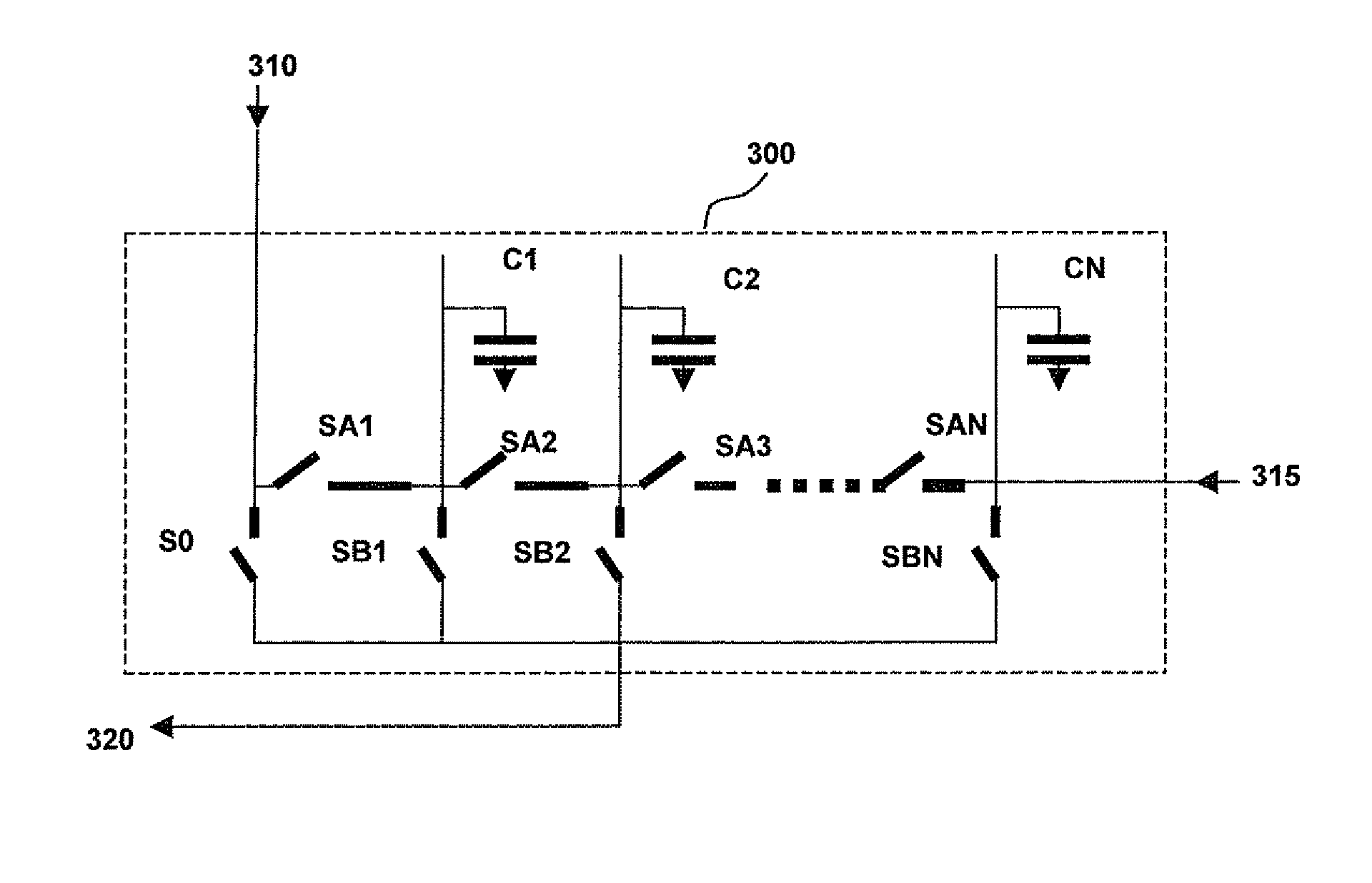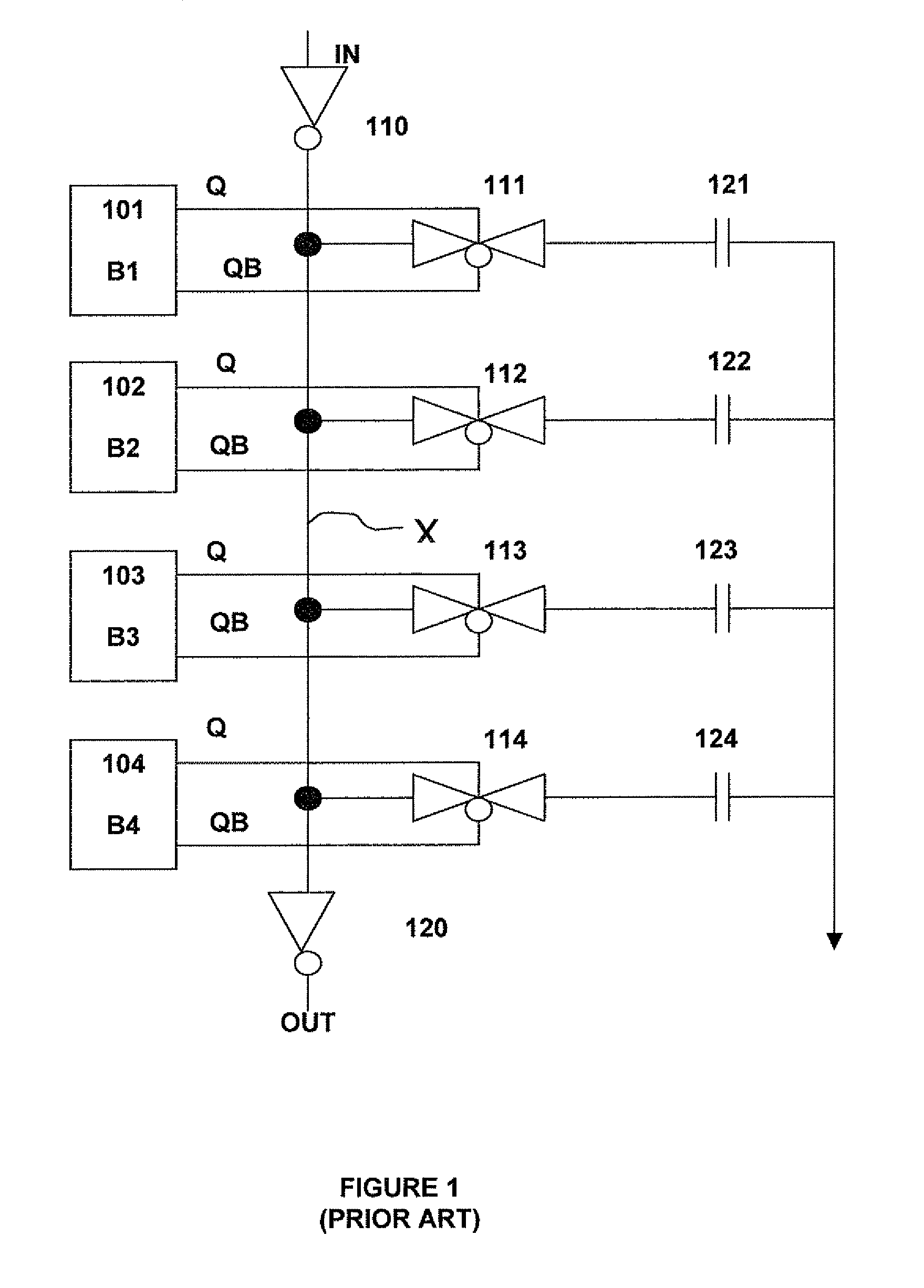Programmable delay introducing circuit in self timed memory
a delay and self-timed technology, applied in the field of self-timed memories, can solve problems such as delay introduced in the triggering of sense amplifiers, and achieve the effect of extending the delay
- Summary
- Abstract
- Description
- Claims
- Application Information
AI Technical Summary
Benefits of technology
Problems solved by technology
Method used
Image
Examples
Embodiment Construction
[0025]FIG. 1 shows a block diagram of a programmable delay element as used in the field. The circuit comprises memory cells (101), (102), (103) and (104) which are loaded with bits B1, B2, B3 and B4. An inverter (110) drives internal node X. Capacitors (121), (122), (123) and (124) are connected to node X via transmission gates (111), (112), (113) and (114). The capacitors (121), (122), (123) and (124) have capacitances C1, C2, C3 and C4. The transmission gates (111), (112), (113) and (114) are controlled by memory cells (101), (102), (103) and (104) respectively. The Q output terminals of the memory cells (101), (102), (103) and (104) are coupled to the gates of the NMOS transistors of the transmission gates (111), (112), (113) and (114) respectively. The QB output terminals of the memory cells (101), (102), (103) and (104) are coupled to the gates of the PMOS transistors of transmission gates (111), (112), (113) and (114) respectively.
[0026]A transmission gate is on if there is lo...
PUM
 Login to View More
Login to View More Abstract
Description
Claims
Application Information
 Login to View More
Login to View More - R&D
- Intellectual Property
- Life Sciences
- Materials
- Tech Scout
- Unparalleled Data Quality
- Higher Quality Content
- 60% Fewer Hallucinations
Browse by: Latest US Patents, China's latest patents, Technical Efficacy Thesaurus, Application Domain, Technology Topic, Popular Technical Reports.
© 2025 PatSnap. All rights reserved.Legal|Privacy policy|Modern Slavery Act Transparency Statement|Sitemap|About US| Contact US: help@patsnap.com



